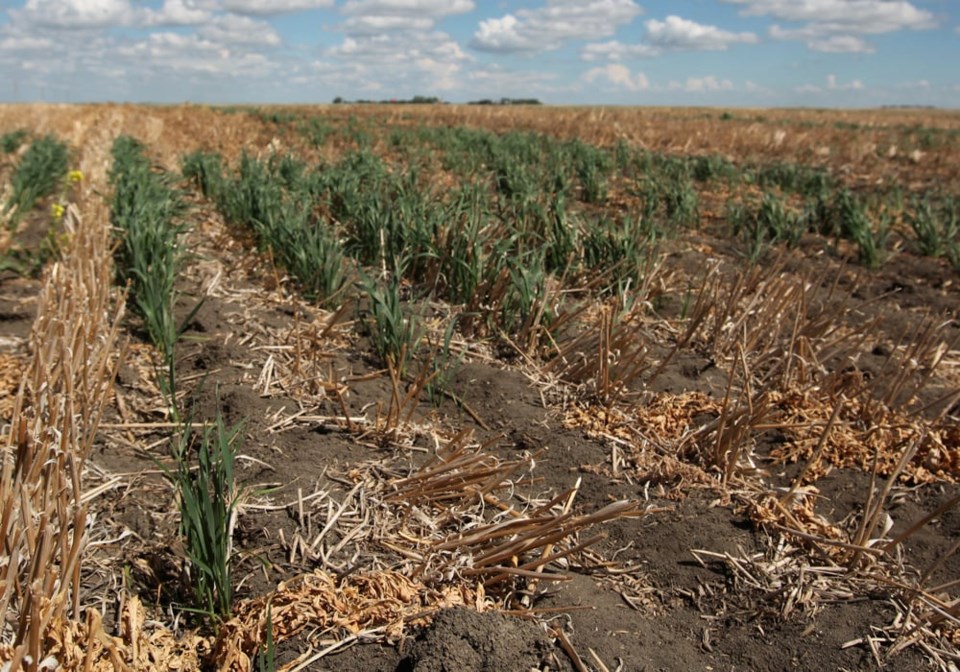WESTERN PRODUCER - Industry officials are flummoxed by recent wheat market behaviour.
Hard Red Winter Wheat (HRWW) July futures tumbled 16 percent between April 18 and May 2. The freefall was due in part to a two-day rain during the last week of April that delivered up to 100 millimetres of moisture to parts of the U.S. ┬ÚÂ╣┤ź├ŻAVern Plains.
It was a gross overreaction, according to those closely monitoring the progress of this year’s crop.
“I have no idea why the markets have done what they’ve done,” said Justin Gilpin, chief executive officer of the Kansas Wheat Commission.
The rains in his state fell in southwest Kansas, an area that hadn’t seen any substantive moisture in nearly a year.
“Unfortunately, a lot of that wheat was too far gone,” he said. “It had little impact on that crop.”
The moisture was welcome, but more for the spring crops farmers will be planting to replace their withered winter wheat.
The rain was desperately needed in central Kansas, where the crop at least had a fighting chance, but that didn’t happen and now the crop is looking “pretty stressed” as well, said Gilpin. In fact, crops are struggling across much of the southern Plains region.
He believes final winter wheat production will fall below last year’s 14.45 million tonnes, which was the smallest crop since 1963.
The Oklahoma Grain and Feed Association is forecasting 1.47 million tonnes of production, a 16 percent drop from last year and about half of what would be considered a good crop for that state.
Gilpin doesn’t have a formal estimate for Kansas, which is responsible for nearly half of total U.S. HRWW production.
Farmers in his state planted more acres but abandonment rates will be higher than last year. He believes production will fall below last year’s 6.64 million tonnes.
That is why he finds it so hard to fathom why futures prices are falling.
One possible reason is that even with the recent price drop, U.S. wheat is not even close to being price competitive with Russian and Romanian wheat, according to Egypt’s most recent General Authority for Supply Commodities tender.
Another possible explanation is that wheat is being pulled down by corn, which has been languishing due to forecasts calling for a record Brazilian crop.
Gilpin thinks the HRWW market is being battered by outside factors and fund money flows rather than fundamentals.
“It just feels like the market is oversold and kind of overdone considering the production situation we’re facing in the southern Plains of the United States,” he said.
There is more HRWW rated very poor or poor than there is good to excellent in the U.S.
MarketsFarm analyst Bruce Burnett agrees that the market response has been a bit of a head-scratcher.
“We’re still looking at a very, very small hard red winter crop this year and I don’t think the market has fully grasped that yet,” he said.
“The rains came too late for some of the areas in Texas and Oklahoma that got the bulk of the rain.”
Burnett has spoken to U.S. growers who left him with the distinct impression that a rebound isn’t in the cards.
“One farmer said, ‘just because we got an inch of rain doesn’t mean that (the crop) is going to go from six inches to 12 inches when it’s heading out here,'” he said.
Burnett believes the U.S. HRWW crop will be about the same size as last year, or perhaps even a little smaller, as Gilpin indicated.
That means high protein wheat like that grown in Western Canada will be in short supply once again this year.
Contact [email protected]




